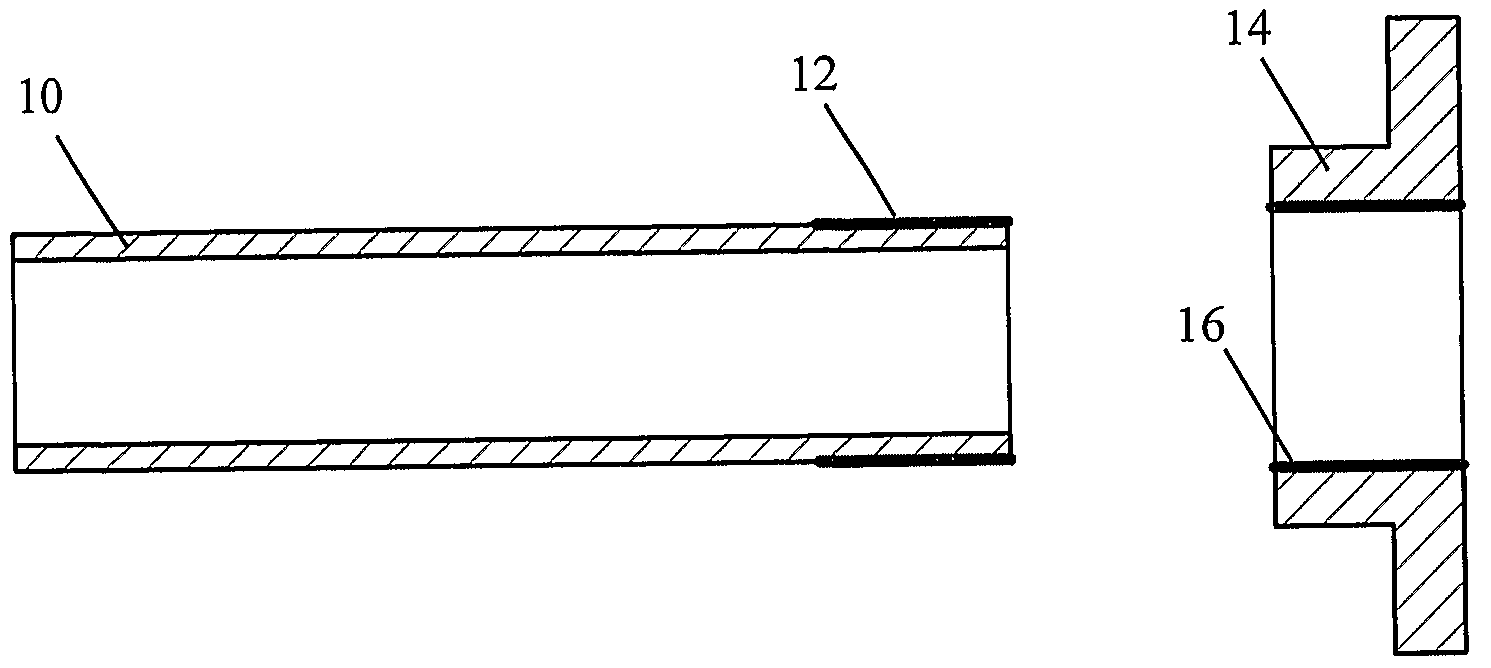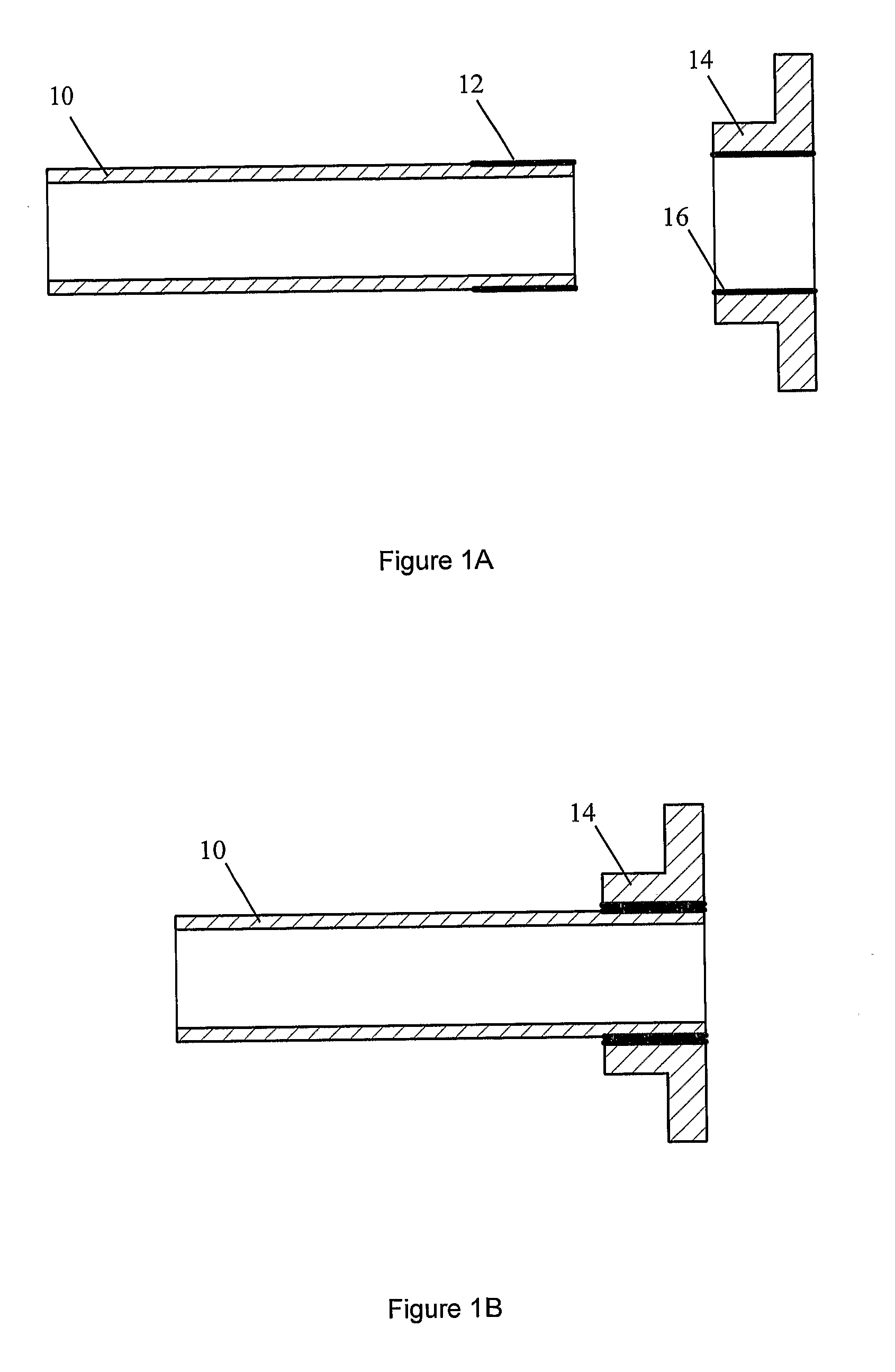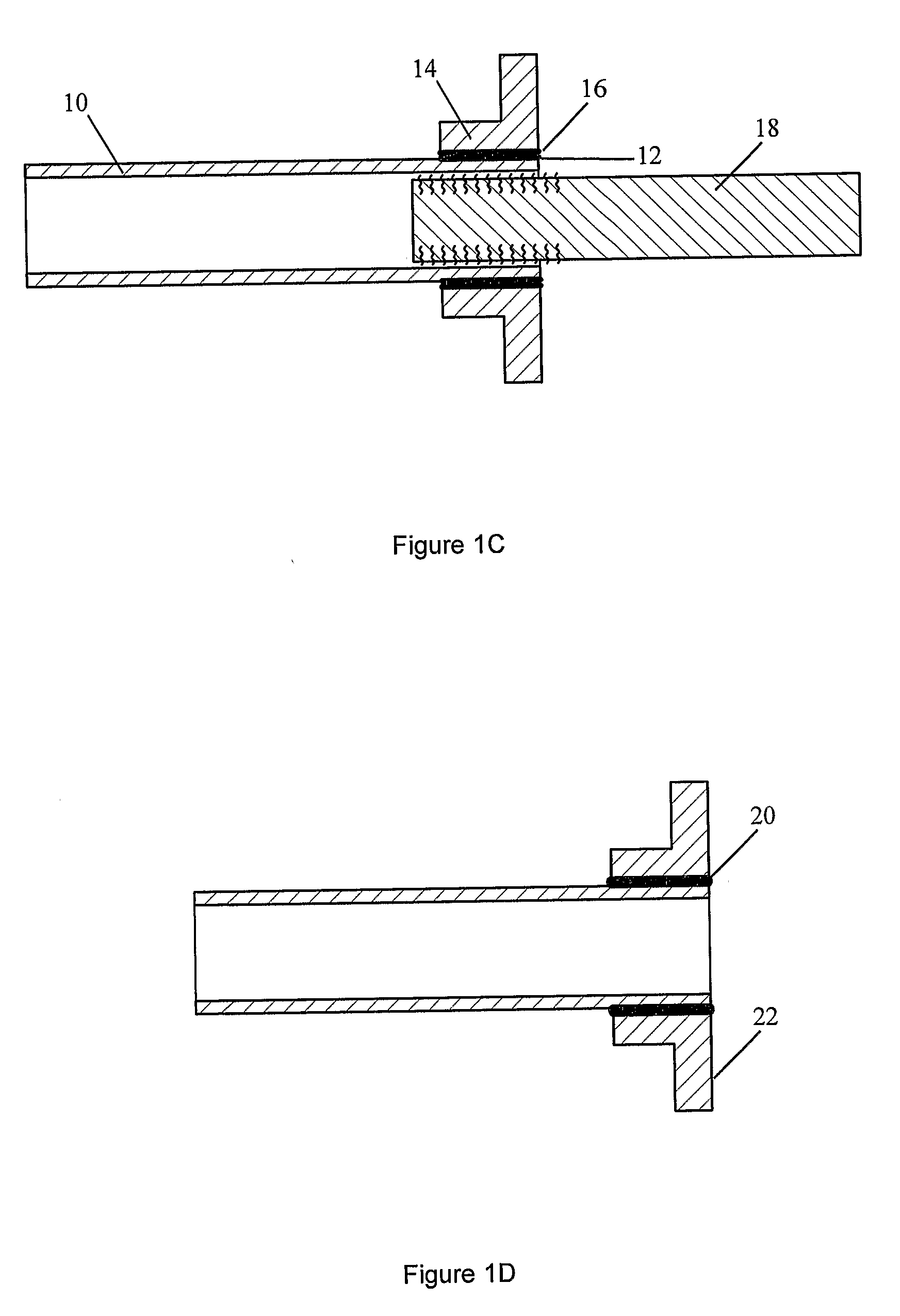Joining of Concentric Section Polymer Composite Components
- Summary
- Abstract
- Description
- Claims
- Application Information
AI Technical Summary
Benefits of technology
Problems solved by technology
Method used
Image
Examples
first embodiment
[0060]In the invention, one composite component with a thermoplastic surface is selected for fitting together with a second component, to provide a neat or interference fit between the components in the desired joint area. The second component may be constructed from any material. In the case where reshaping of the second component is desired, a surface that can be easily machined or reshaped is desirable. Fitting of metal components, polymer components and polymer composites to the first composite component is preferable using this technique. Where polymers or polymer composites are utilised, a compliant surface is desirable.
[0061]One principal reason for the use of or attachment of a thermoplastic surface to the first composite component is the ability of the surface thermoplastic material to undergo at least local compressive strain and deform plastically under fitting operations without rupture. A brittle surface material such as that often found in a thermosetting polymer or a ...
second embodiment
[0065]The surface of the first (12) and / or second (16) component, or at least that part of the component which is to be joined, may be shaped in the next operation. Guidelines for the relative dimensions of parts to be joined by a neat or interference fit may be used for the design of composite components with thermoplastic surfaces, to enable joints of varying tightness and / or required insertion force to be made. Use of the first or second embodiment of the invention, where the components are fixed relative to each other following assembly, relies on the correct choice of relative dimensions between the mating surfaces of the relevant components.
[0066]Locally reprofiling the thermoplastic surface of the composite can be achieved using any of the methods described in PCT / AU2004 / 001272. Tight control of relative dimensions in the joint area will be required to obtain a secure fit, without requiring excessive assembly forces.
[0067]FIG. 1B shows the assembled components. The fitting op...
PUM
| Property | Measurement | Unit |
|---|---|---|
| Temperature | aaaaa | aaaaa |
| Pressure | aaaaa | aaaaa |
| Electrical conductivity | aaaaa | aaaaa |
Abstract
Description
Claims
Application Information
 Login to View More
Login to View More - R&D
- Intellectual Property
- Life Sciences
- Materials
- Tech Scout
- Unparalleled Data Quality
- Higher Quality Content
- 60% Fewer Hallucinations
Browse by: Latest US Patents, China's latest patents, Technical Efficacy Thesaurus, Application Domain, Technology Topic, Popular Technical Reports.
© 2025 PatSnap. All rights reserved.Legal|Privacy policy|Modern Slavery Act Transparency Statement|Sitemap|About US| Contact US: help@patsnap.com



